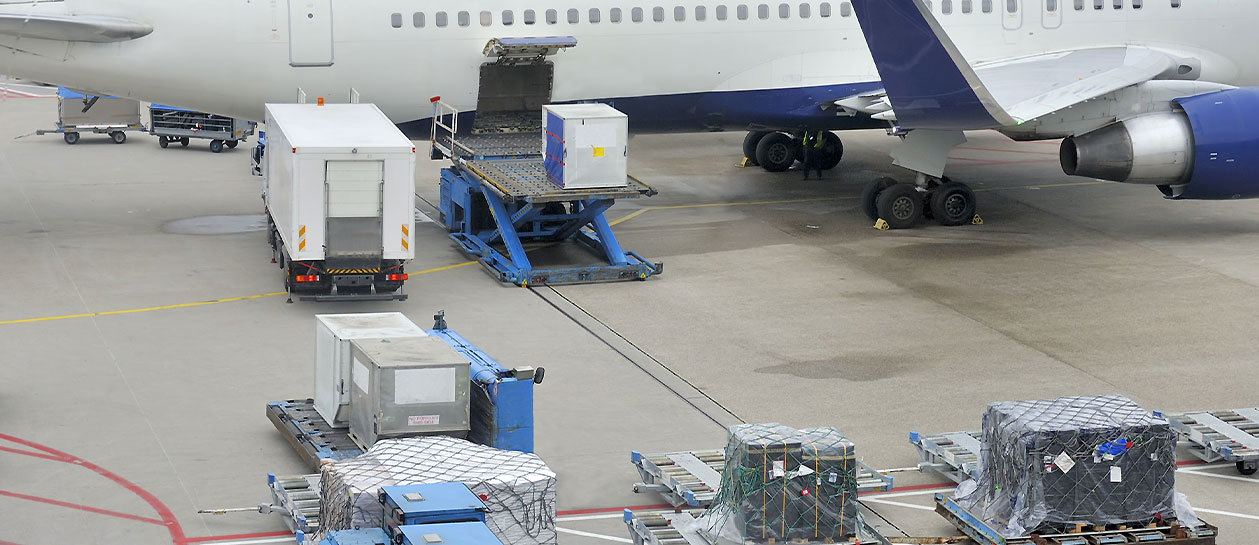Growth in air cargo will increase demand for Dangerous Goods by Air training
Growth in air cargo will increase demand for Dangerous Goods by Air training
The aviation sector has been one of the hardest hit industries of the Covid-19 pandemic, with much of the world’s passenger airlines being grounded since March 2020. Carriers that have been able to take to the skies on a limited schedule – and limited passenger numbers - have looked to cargo to make their flights commercially viable.
With ocean shipping becoming less reliable and more expensive – port-to-port transit only hitting delivery schedules 65% of the time and container fees increasing by around 500% - more and more operators have decided to transport goods by air over the past 18 months.
The strategy is paying dividends for aviation. Passenger numbers globally were still down over 80% on 2019 numbers at the start of summer 2021, but one airline alone was able to set a record cargo revenue of $247m in the first half of the year.
But while transporting all manner of global trade alongside passenger suitcases in the cargo hold may make financial sense, it is not without risk. When freight is transported by air, it is imperative that goods are packed and stored in line with regulatory standards to ensure flight safety.
Get it wrong, especially on a commercial flight with additional passengers and cabin crew, and the consequences can be horrendous. Just take the example of ValuJet 592 – a commercial passenger flight that crashed shortly after take-off from Miami in 1996.
A fire was started by chemical oxygen generators which had been packed in the cargo bay incorrectly. A bump apparently set one of the generators off and the resulting heat started a fire which was fed by the oxygen being given off. It took hold so quickly that pilots had no time to land the aircraft: it crashed killing all 110 people on board.

Another incident on a cargo aircraft in 2010 saw two crew perish when the plane crashed near Dubai after a fire was reported on board. The investigating authorities determined “with reasonable certainty” that the fire originated in a cargo container which held thousands of lithium batteries.
A total of 36 recommendations for safety improvements were made as a result of the investigation, and in 2015 led to the International Civil Aviation Organization adopting a ban on the shipment of lithium metal batteries as cargo on board passenger aircraft.
With demand for air cargo services expected to remain at current levels – and even increase during peak times such as holiday seasons – there is a greater need for ground crew to be aware of transportation risks and how to mitigate against them.
Mintra’s eLearning course Dangerous Goods by Air – which is accredited by the HCA – aims to provide learners with a basic understanding of the regulations, including how goods being transported on aircraft should be labelled, packed and stowed. It also outlines the documentation required to accompany goods for transportation.
The 55-minute course covers a number of key points including legislation and regulations governing dangerous goods, identification of hazardous items carried by passengers and crew, the different classifications of dangerous goods.
By the end of the course learners will also be able to identify different packing groups and packaging, understand labelling requirements and identify loading requirements.
While the Dangerous Goods by Air course is aimed at individuals involved in air shipments, the course is also suitable for use a pre-requisite for the OPITO-approved Helideck Operations Initial Training (HOIT) training courses.
Insights & News
At Mintra, we're so much more than just a team—we're a force driving innovation and excellence in maritime training across Europe.
We’re excited to be taking the stage at one of Europe’s leading showcases of organisational learning.
We are delighted to share the exciting news that our People and Culture team has been shortlisted for the prestigious cHeRries Awards!